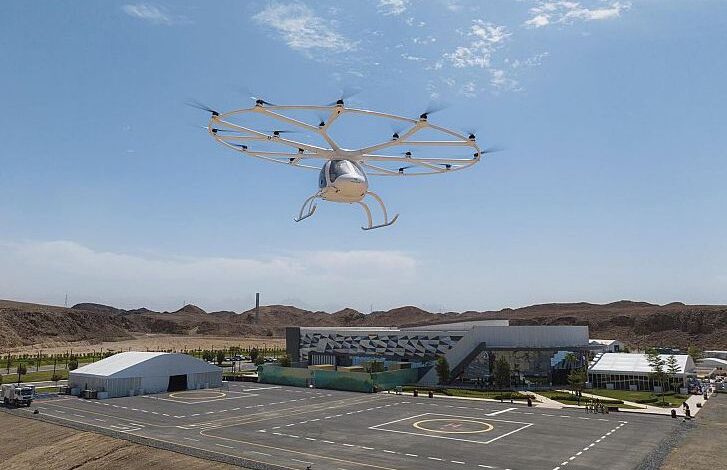
Riyadh – Asdaf News:
Today marked the successful conclusion of a series of air taxi test flights, according to NEOM and Volocopter, the inventor of urban air mobility (UAM). The Kingdom of Saudi Arabia has never before granted a specific flying permission for an eVTOL (electric Vertical Take-Off and Landing) aircraft and conducted test flights.
The General Authority of Civil Aviation (GACA), Volocopter, and NEOM worked together for 18 months prior to the flying test campaign, with the goal of establishing and expanding an electric UAM ecosystem and testbed in NEOM. Prior to the test campaign, the parties collaborated extensively to guarantee complete regulatory compliance and safety.
Volocopter eVTOLs will be essential to NEOM’s intelligent and environmentally friendly multimodal mobility system, which will run entirely on renewable energy produced by solar and wind energy sources. They will serve a number of purposes, such as air taxis and emergency response vehicles, and are quieter, more versatile, and less expensive to operate than the helicopters frequently used today. They use smart and autonomous capabilities that guarantee both safety and continuing relevance in future settings, and they have a reduced on-ground infrastructure footprint, fewer operational constraints, and apply these features.
With the announcement of the test flight, NEOM furthers its EUR 175 million investment and joint venture with Volocopter and establishes itself as a pioneer in the development of future transportation solutions. In order to enable future commercial operations, Volocopter anticipates receiving type certification for the VoloCity air taxi in 2024. At its facilities in Bruchsal, Germany, Volocopter recently announced the start of VoloCity serial production. These facilities have the ability to produce more than 50 aircraft per year in a single shift.




